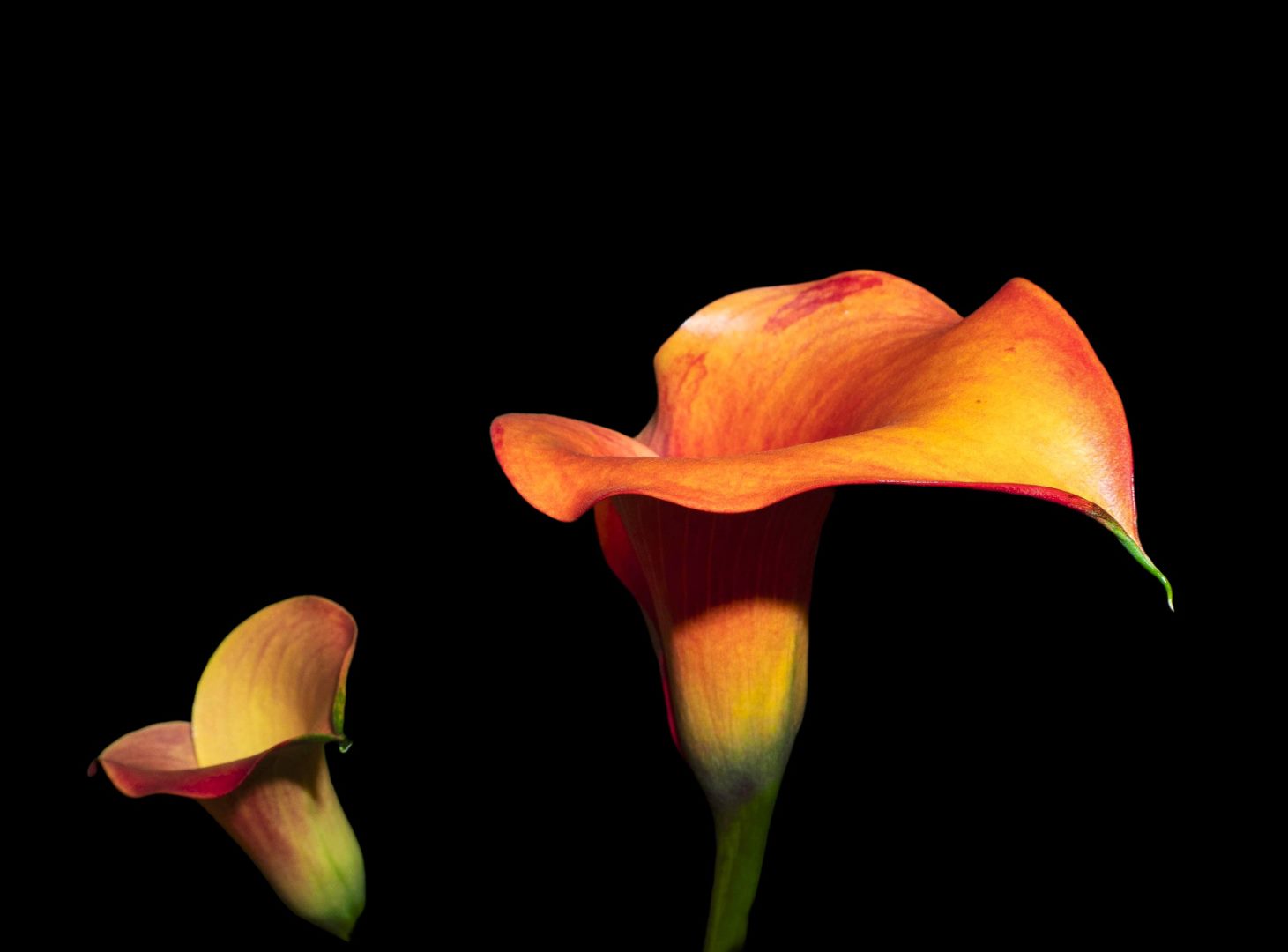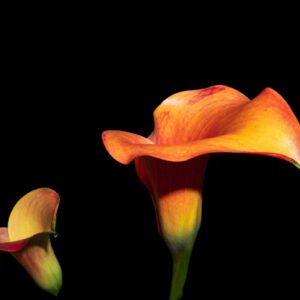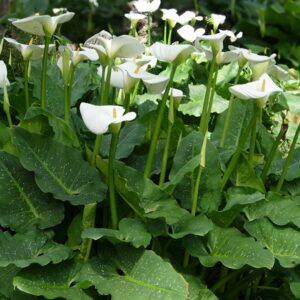Your cart is currently empty!
The Calla Lily: A Symbol of Purity and Elegance

Introduction
The calla lily, with its striking white petals and elegant trumpet-shaped center, is a beloved flower that has graced gardens and homes for centuries. Known for its resemblance to a lily, the calla lily actually belongs to the Araceae family. In this comprehensive guide, we will explore the beauty, symbolism, and care of this captivating flower.
Symbolism of the Calla Lily
The calla lily holds deep cultural and symbolic significance:
- Purity and Innocence: Its white petals symbolize purity, making it a popular choice for weddings and other celebrations of new beginnings.
- Resurrection and Hope: In some cultures, the calla lily represents resurrection and hope, blooming anew after the harshness of winter.
- Mourning and Remembrance: White calla lilies are often used in funeral arrangements, symbolizing sympathy and the remembrance of loved ones.
Varieties of Calla Lilies
There are numerous varieties of calla lilies, each with its unique charm:
- White Calla Lily (Zantedeschia aethiopica): The classic, pure white calla lily with a trumpet-shaped center.
- Pink Calla Lily (Zantedeschia rehmannii): A delicate, blush-pink variety.
- Yellow Calla Lily (Zantedeschia elliottiana): A cheerful, golden-yellow flower.
- Purple Calla Lily (Zantedeschia amethystina): A striking, deep purple bloom.
- Black Calla Lily (Zantedeschia albomaculata cv. ‘Black Magic’): A mysterious and dramatic variety with black-purple petals.
Care Instructions for Calla Lilies
Calla lilies are relatively easy to grow with proper care:
Sunlight
- Prefer bright, indirect sunlight.
Soil
- Plant in well-drained, moist soil rich in organic matter.
Water
- Water regularly, keeping the soil consistently moist but not soggy.
- Reduce watering during the dormant period.
Fertilizer
- Fertilize monthly during the growing season with a balanced fertilizer.
Hardiness
- Calla lilies are hardy to different temperatures depending on the variety.
- Most are hardy in USDA hardiness zones 9-11, while some can tolerate colder temperatures with winter protection.
Dormancy
- Calla lilies enter a dormant period during winter.
- Allow the foliage to yellow and die back naturally.
- Stop watering and fertilizing during this time.
Toxicity
All parts of the calla lily plant are toxic to humans and pets if ingested.
Common Diseases and Pests
Calla lilies are susceptible to a few common diseases and pests:
- Botrytis Blight: A fungal disease that causes brown spots and wilting.
- Slugs and Snails: These pests can feed on the leaves and flowers.
- Aphids: Small, sap-sucking insects that can weaken the plant.
Conclusion
The calla lily is a captivating flower that brings beauty and symbolism to any occasion. With its pure white petals and elegant trumpet-shaped center, it represents purity, hope, and remembrance. Whether grown in gardens or used in floral arrangements, the calla lily continues to enchant and inspire.








Leave a Reply